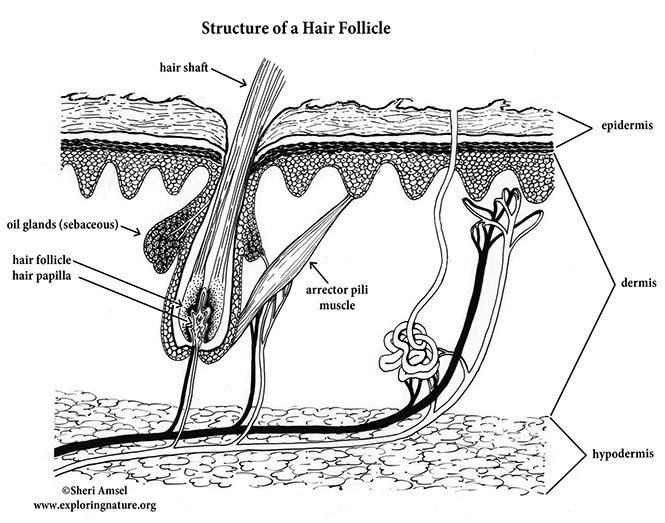

The hair follicles extend down into the dermis or even the hypodermis of the skin. Hair follicles produce all the hair on the body. The deep end of the hair follicle forms a “hair bulb.”
A hair papilla (knot of capillaries) protrudes into the hair bulb and nourishes it. The hair root is encased in and external and internal root sheath.
Sebaceous glands are wrapped around the hair follicles. They secret an oily sebum that keeps hair pliable and helps waterproof the skin to prevent dehydration.
The smallest muscles of the body are found attached to the hair follicles. They are called arrector pili muscles. These smooth muscle fibers extend from the wall of the hair follicle to the epidermis. When exposed to a cool breeze, the muscle will contract and pull the hair straight up. This is how goose bumps are formed.
When you research information you must cite the reference. Citing for websites is different from citing from books, magazines and periodicals. The style of citing shown here is from the MLA Style Citations (Modern Language Association).
When citing a WEBSITE the general format is as follows.
Author Last Name, First Name(s). "Title: Subtitle of Part of Web Page, if appropriate." Title: Subtitle: Section of Page if appropriate. Sponsoring/Publishing Agency, If Given. Additional significant descriptive information. Date of Electronic Publication or other Date, such as Last Updated. Day Month Year of access < URL >.
Amsel, Sheri. "Hair Follicle" Exploring Nature Educational Resource ©2005-2024. December 14, 2024
< http://www.exploringnature.org/db/view/Hair-Follicle >

